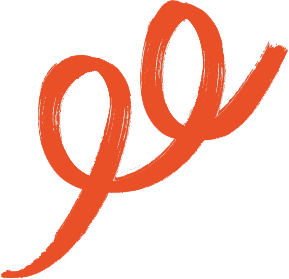
Creating an NFT Launch Pad
Grimace Digital Collectibles
2023 - Present
Overview
McDonald’s leads market share of QSR with 18% (Statistica, 2024). Yet, 71% of the cross department team (internal survey, 2022) identified greater emotional connection with customers as an important gap to tackle.
43% wanted to extend touch points with the brand beyond food and physical locations. With social media being increasingly friends and family driven (M. Zuckerberg, 2018), and interest graph driven (Bytedance, 2022), brands are increasingly having to pay to reach users.
Moreover, customers are a lot more ad sensitive, a Nielson study shows 64% take actions to avoid ads, leading to an increased difficulty and spending toward marketing. The growth of brand advocates would ensure McDonald’s invests in future of its business through organic and genuine fan driven conversations.
-
1 UI/UX Designer • 1 3D Designer • 3 Software Engineers
-
Research • Sitemap • Wireframe • Product Design • UI • Prototype • Usability Testing
-
Miro • Notion • Figma • Google Forms • 1:1 interviews • Focus Groups • Mobile Research
The Opportunity
McDonald’s has a strong track record in leading digital innovation in the QSR space. It was at the forefront of the self-service kiosk movement, being one of the first major fast-food chains to adopt the technology. It transformed the traditional ordering process and provided customers with a more convenient and personalized experience, whilst boosting revenue (FHA, 2024).
In 2021, web3 exploded in popularity. Powered by blockchain technology, images, videos, and virtual land were able to be tokenized as non-fungible tokens (NFTs). These tokens had a huge demand, with sales reaching US$25B in 2021 (Reuters, 2022), and the world’s top consumer brands like Louis Vuitton, Coca-Cola, Nike, Gucci launching their own collections with a mix of unique art, physical utility, and gamification elements that attracted holders.
According to Google Trends (2022), Singapore ranked in the top 3 worldwide in interest in NFTs. Local celebrities like Jack Neo, JJ Lin, ShiGGa Shay, and Mark Lee were jumping on this wave to launch their own collections (Vulcan Post, 2022).
McDonald’s saw an opportunity to shape Singapore’s QSR space, fostering digital innovation and lead the way in applying this new technology to meet the new and fast growing demand.
The Challenge
Since 1979, McDonald's had been selling physical collectibles that have delighted and generated huge demand amongst customers, e.g. Fans queuing from midnight for Hello Kitty carriers and dolls (Straits Times, 2019).
In 2021, technology started emerging that allowed for digital collectibles. For the first time, images could have unique data attached to them, stored in a immutable public ledger, proving their authenticity, ownership, and scarcity, making a strong case for collectorship.
These were in demand by a new generation of young collectors and creators (TIME, 2021), primarily between ages 18-34, with an expected NFT adoption rate growth of 3X to 17.8% based on a survey of 28,000 Singapore-based internet users (Finder, 2024).
How could McDonald's reach this new generation of tech native customers and set themselves up for this new era?
Any visual asset could be a collectible. In arriving at the choice, we studied the top 10 NFT collections, 70% were profile pictures (PFPs) collections. I initiated my market research by delving into different categories of PFPs that have demonstrated success in the NFT market.
Through a thorough examination of their design approaches and distinguishing features from other NFT ventures, I concluded that the key to fostering a robust community lies in the strategic initiatives outlined in their roadmap, the practicality of the utility offered to users and a seamless minting process. PFP NFTs served a core need of digital identity, whilst also allowing for tribes to form from holding variations of a common base, and a basis to offer utility and perks (roadmap).
We chose McDonaldland characters for its nostalgia and history which juxtaposes with the immutability of blockchain. Diving deep into each character and looking at trends of popular PFP art, Grimace was identified for:
Distinct form
Plain base, ideal for styling
Gender neutral to appeal to males and females as their PFPs
Market research
Research
User Research
I conducted user research by hosting a focus group session involving Superfans and Crew members through the platform Miro, with a focus on gathering qualitative insights. The objective was to gain a deeper understanding of the factors influencing users' decisions when considering investment in an NFT, including aspects like the community, roadmap, utility, and design that are taken into account when exploring potential NFT communities.
Findings:
74% of focus group participants expressed a preference for an NFT that highlights creativity and provides access to an exclusive tasting menu, or the opportunity to participate in menu research and development (R&D) activities.
60% of focus group participants indicated their desire to cultivate a community aimed at fostering connections, voting, and exchanging ideas.
30% of the participants in the focus group indicated that they were interested in the implementation of a loyalty or point system as a means to showcase their status and receive rewards.
Personas
There were two personas that were discovered from the focus groups:
The primary persona includes enthusiasts of web3, especially individuals who are already NFT owners. They are receptive to investing in emerging NFT communities that provide practical benefits.
The secondary persona includes users who might lack a starting point for their NFT research or feel unsure about how to mint an NFT.
Commonalities:
Opensea.io was their preferred mode for conducting their NFT research.
There should be a smooth process in place for users to mint the NFT.
How can the process of claiming Digital Collectibles be streamlined for non-web3 users to ensure they can fully enjoy the associated utility and benefits?
Features
The next phase involved conceptualizing the product’s components.
Utilizing user stories derived from the focus group results, I prioritized them using the MoSCow prioritization approach.
Phase 1: I prioritized the 'Must-Haves' and 'Should-Haves' user stories. The 'Must-Haves' concentrated on vital information needed for assessing and choosing a digital wallet provider, while the 'Should-Haves' revolved around features that could improve the user experience.
Phase 2: This would focus on the 'Could-Haves' meant for exploration in a subsequent product development phase. It would cover extra features that piqued the interest of users during the research, going beyond the utility of the NFT. These include opportunities like attending exclusive in-person events, partnering with web3 brands, and enhancing community engagement by providing a platform for users to connect and share their experiences.
Based on the 'Must-Haves' and 'Should-Haves' user stories, I have translated them into detailed features and content for the app, outlining the user flow. Drawing inspiration from digital wallet apps like Web3Auth and Coinbase, I integrated essential features and content to enhance user experience and streamline the app functionality.
Sitemap
Most NFT minting require users to go to external platforms like OpensSea or Magic Eden. However, those platforms feature many other collections and feel too foreign for non-web3 users. To ensure that the Digital Collectibles are accessible to both non-Web3 and Web3 natives alike, McDonald’s needed a solution which was seamless and accessible through the McDonald’s app, and any utility should be claimed through the same app instantly as well.
Such a solution was not commonplace, and we had to develop a minting technology from scratch – one that was able to map Web3 wallets to the users’ McDonald’s ID, allowing for native integration. To ensure that the Digital Collectible will be in the good hands of true McDonald’s fans, it also needed to be soulbound and non-tradeable. Hence the focus on Digital Collectibles instead of calling it an NFT.
A sitemap was created with a structure comprising five sections: Homepage, Collectibles, Perks Page, Terms of Use, and Privacy Policy. The best technology works silently, under the hood. Users should not be required to have technical knowledge nor go through complex workflows. “It just works” is the mantra of the best web applications and we achieved that with the minting process.
Design Principles &
Design System
Once the features were defined, the next step involved mapping out the PFP and the app's visual presentation.
The primary aim was to ensure that the product was user-friendly and practical.
Drawing inspiration from McDonald’s clean design for its trusted and easy-to-navigate interface, the design also integrated playful elements to cultivate a welcoming and amicable look and feel.
Ensuring that each Grimace trait was given a rarity percentage so that the collection is varied.
Applying the golden ratio and determining a unique angle of the character.
We were tasked with creating a title for the collection that would resonate with the cherished Grimace character, avoiding direct references to financial gain or NFTs. The title had to reflect the app’s core function of gathering and safeguarding NFTs, giving rise to the name of the collection.
User App Experience
Drawing from my site map, structured into five sections, and utilizing my design systems, I developed high-fidelity designs in Figma. To quickly visualize and iterate the app's look and flow, I first sketched low-fidelity designs on paper. Please feel free to request these initial designs if needed.
1. Notification: Over 1 Million existing users on the McDonald’s app will receive a notification on their mobile devices from the McDonald’s team once the minting goes live. Upon receiving the alert, users can access the McDonald’s app and will notice the Grimace Digital Collectibles button on the homepage. For individuals who are not current app users, they will be required to download the app from either the App Store or Google Play.
2. Action: Upon landing on the homepage, users are directed to select "Mint Now" which will then require them to either sign in or create a digital wallet.
3. Once the digital wallet is connected, they will proceed to tap the "Mint Now" button, which will initiate the minting process.
4. Once the NFT is minted, users have the ability to view Grimace's traits. Their collectibles can also be accessed through the menu.
5. To access the complete collection, users can utilize the menu to find their way to the 'Discover Collectibles' section.
6. To ensure transparency for users, they can conveniently access the privacy policy and terms of use via the menu.
Prototype
Measurement
In the concluding phase of my project, I established criteria to gauge the extent to which the launch pad has effectively delivered a smooth user experience. The main measure of success is determined by the rate of app adoption, with app usage efficiency serving as the secondary metric of success.
Before initiating the launch of the launchpad, I carried out a usability test internally with McDonald’s Crews, to gather feedback on the prototype and pinpoint any noteworthy improvements.
User App Experience
1. Time spent on the app:
Highly Satisfied
Users found minting their NFTs to be a speedy process, taking only 2-3 minutes for successful completion, which left them highly satisfied. This marked a notable enhancement from the usual 15-20 minutes that users spent navigating through the minting procedure.
In total, accounting for blockchain confirmation and queuing time, it took 17 minutes for the entire collection to be minted.
2. Information on the app:
Satisfactory
The provided content includes essential details for users to begin the minting process effectively. A key factor in enhancing user experience was the inclusion of a tutorial video alongside the instructions.
Users expressed satisfaction with the clarity of information provided, noting that this step is often ambiguously addressed on alternative launchpads.
3. App experience:
Easy to navigate
Users typically rated their experience as 8 out of 10. Although most did not give a perfect score, they considered the user experience to be simple and easy to navigate. A few users even drew parallels to using the McDonald’s app, suggesting they anticipated a similar level of familiarity.
4. Design:
Familiar
Users appreciated the launchpad design because it integrates seamlessly with the layout of the McDonald's app.
Takeaways
The process of claiming Digital Collectibles aims to be user-friendly for those unfamiliar with Web3, ensuring a smooth experience. This approach enables non-Web3 users to access the utility and benefits of Digital Collectibles effortlessly. A never-seen before community of superfans also exploded into life, sharing their collectibles and all things McDonald’s. We saw a huge participation growth, where 99.8% of members had sent at least 1 message in the chat, amounting to more than 11k messages sent in 7 days.
Moving forward, the emphasis should be on enhancing the app's features, utility and roadmap to improve the user experience before the launch of the launchpad, whilst also up-keeping the Telegram holder’s channel. This process of refinement must tackle any issues found during the usability test
By giving importance to enhancing the app based on user input, the launchpad can guarantee that it stays in line with users' changing requirements and Web3 technology advancements. This dedication to continual improvement is key to the app's lasting success and keeping users satisfied in the long run.
Let’s Connect
amanda.tn@gmail.com
















































